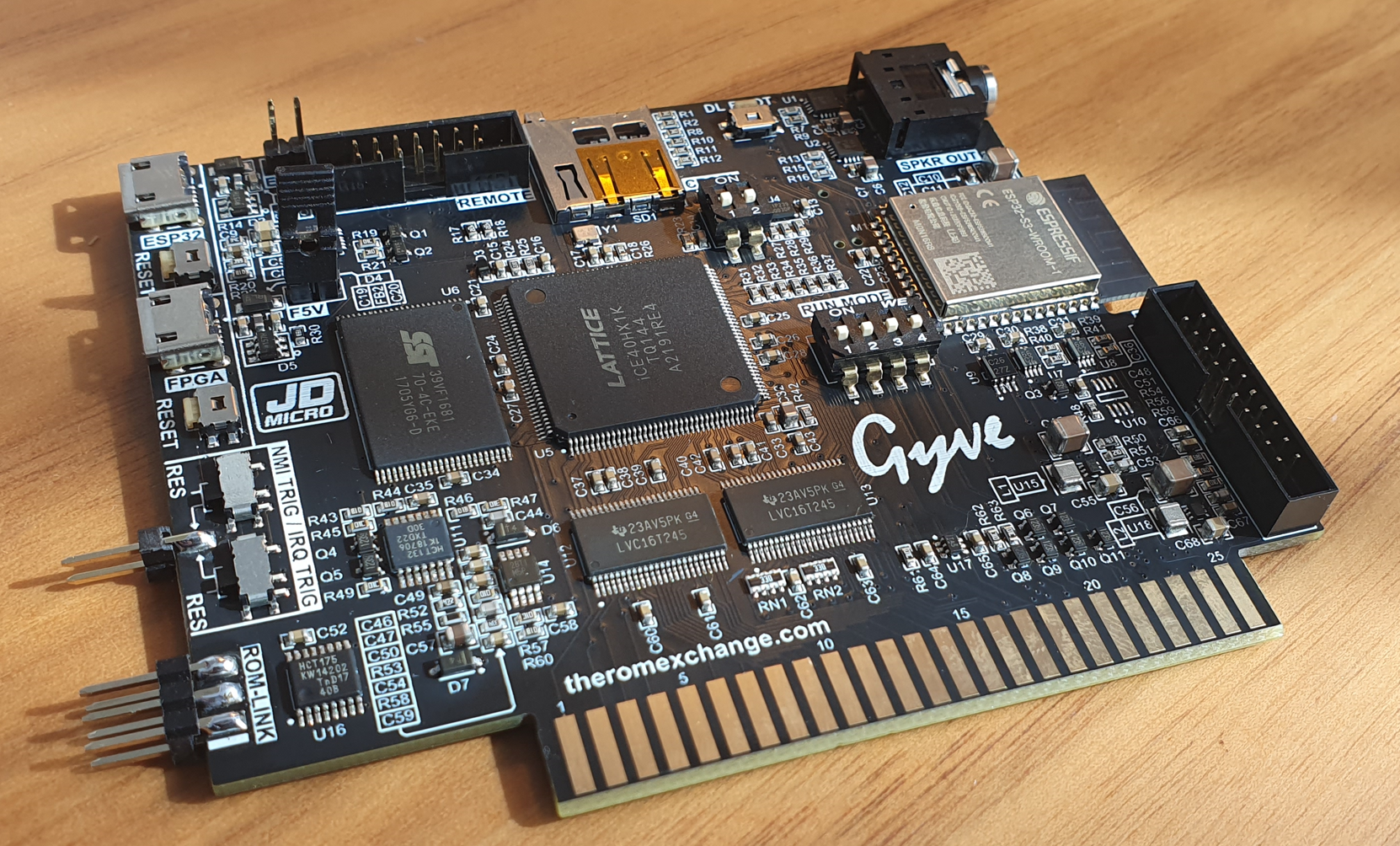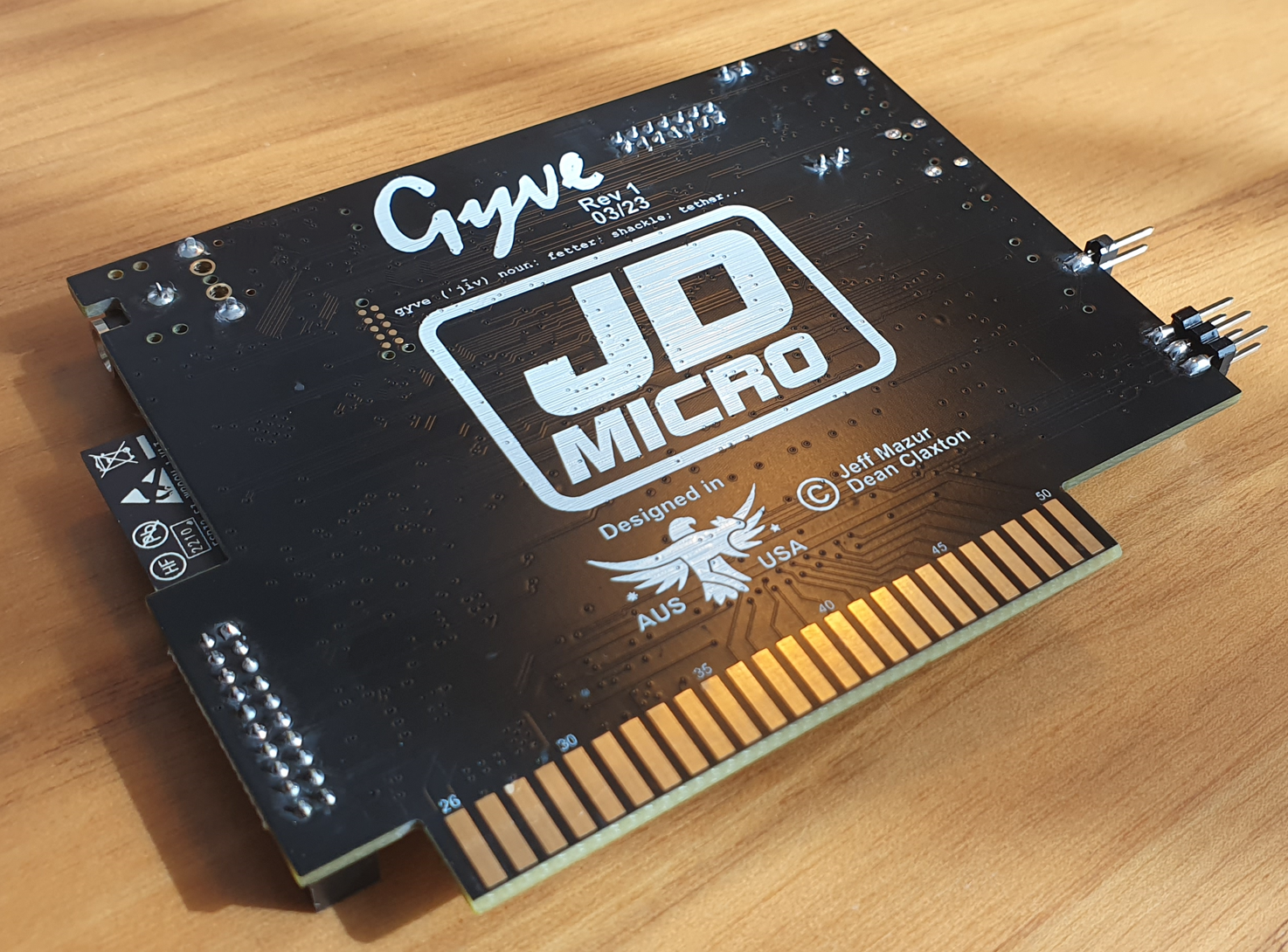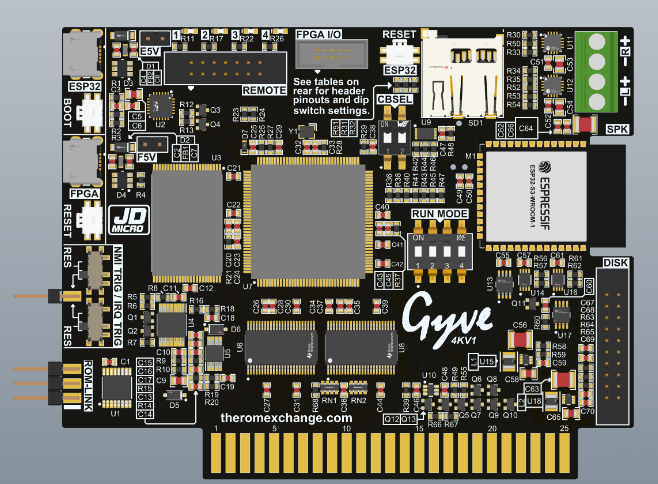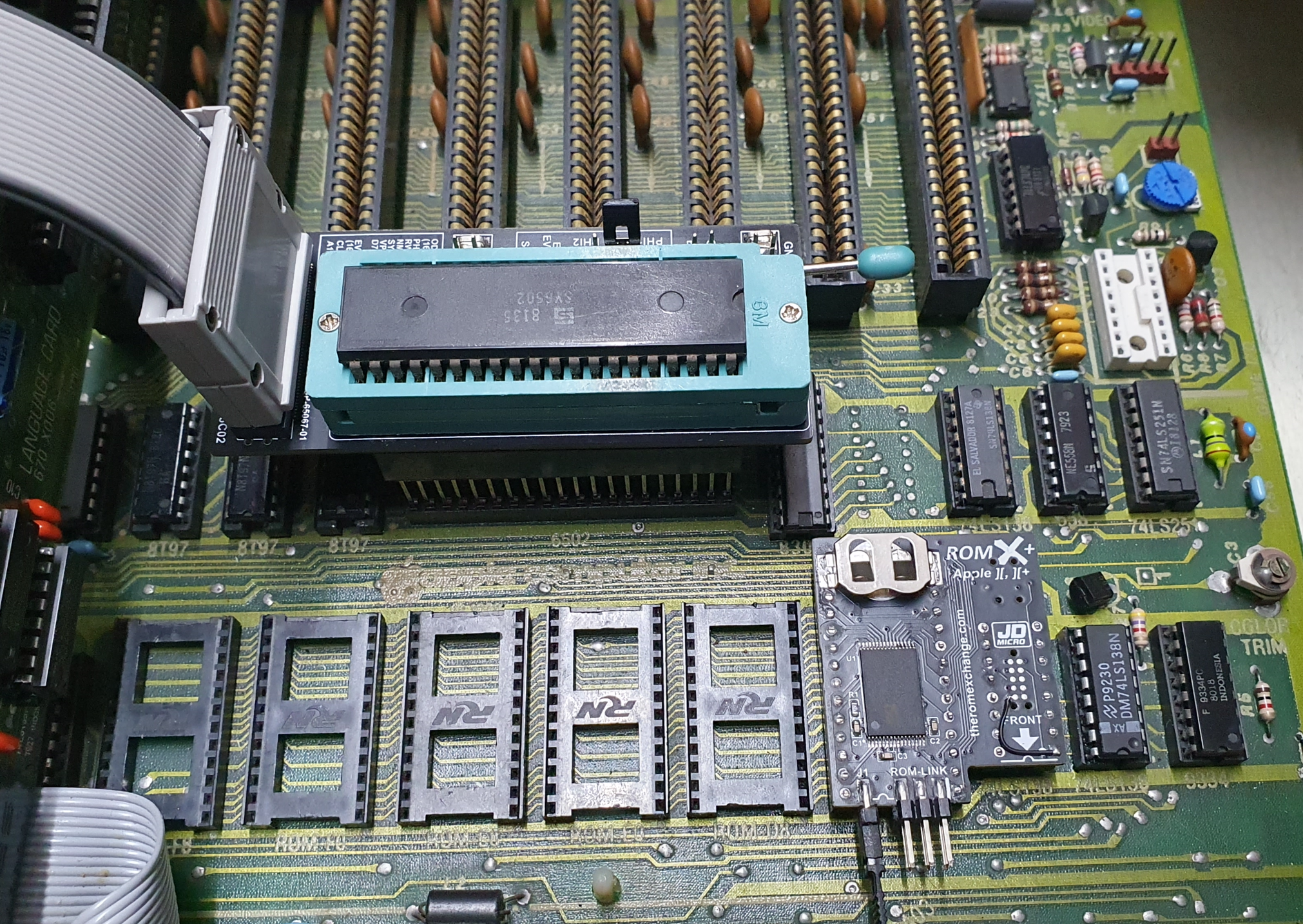11th December 2023
Nine months since the last blog entry - wow. Time has really flown by this year. I've been busy with all kinds of things - some ROMX related, but mostly the day job I'm afraid.
We did get some cool stuff done though. A couple of Gyve cards were built and given a bit of a hardware shakedown.


During this process I found a couple of minor issues, and one major one - I couldn't get the USB bootloader to compile for the iCE40 HX1K FPGA. This variant contains 1280 logic cells, which wasn't quite enough. We want this to be easily re-flashable by the end user, and the USB bootloader is key to this. There was nothing for it but to switch to a larger variant of the iCE40 - the HX4K with 3520 logic cells. Unfortuntely this is not quite a drop in replacement - there are quite a few pinout differences - so a new PCB was laid out.

The iCE40 HX4K has some additional IO available, so an extra header (FPGA I/O at top centre) was added to allow users to tinker with add-on hardware. I have the physical PCB's and solder paste stencil in hand for this Gyve 4KV1 version but haven't had the time to build one. I did get the USB bootloader compiling ok for it though, so this should be a go-er. The logic cells used by the bootloader are effectively freed up once the end user image is installed, so there will be heaps of logic available for applications (FujiNet for starters). Gyve is something I'll be working on during my Christmas holiday break :)
Something a little closer to retail reality is ROMX+, which is an updated version of the original ROMX for the Apple II and II+. A Prototype is shown below - rest assured that the bodge wire will not carry through to the release version :) My logic analysis system is hooked up to the CPU socket via the 6502 adapter I designed/built/mentiioned in the last post - it works well! There are 32 logic channels plus clocks on that connector.

Thanks to Jeff's tireless efforts on the firmware side, ROMX+ is now fully operational, and supports the real-time clock and 4mbit flash just like ROMXe, ROMXc, and ROMXc+. In fact, many of the exact same 16KB application images can be installed on it, for near instant loading. We are still trying to squeeze some extra stuff into the CPLD, but will likey call it done very shortly and order the production PCB's. A small header for the I2C interface will be included so that external I2C devices can be connected (such as a small LCD display etc).
ROMX+ should be available early 2024, and Gyve will follow on. I have 4 weeks off at Christmas so hope to get a fair bit of work done (and some more blog entries!). I hope you too have some time off to work on your projects, or to enjoy a little vintage computing.
Wishing you all a safe, happy Christmas holiday season from Jeff and Dean at JD Micro.

